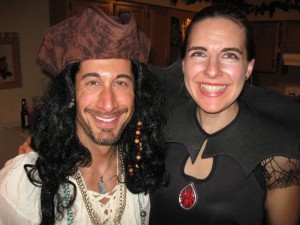Trick or Treat
Halloween is right around the corner! So it’s time to get out decorations, come up with fun costume ideas and decide what kinds of treats to hand out. Remember that “treats” don’t always need to be sweets and chocolates.
Here are some fun non-food ideas that children love:
kids stickers
temporary tattoos
themed adhesive bandages
coins
decorative pencils
box of crayons
fun-shaped erasers
homemade yarn bracelets
ghoulish accessories like creepy spider rings
My boys, Bruce and Kyle, also love sorting through their bags and baskets when we come back home. Of course, as a chaperone, I need my 10% :-) The milk chocolates go over here, the M&M’s over here, etc. Most importantly, we let our boys know that it’s okay to get rid of the hard candies like Tootsie Rolls, Jawbreakers, Rocky candies and lollipops. Not only are these brutal on the teeth, but they have no nutritional value. Sometimes our boys have come home with so much loot that they’re overwhelmed. In that case, limiting the number of houses they visit is a great idea. Hey, what a great idea! They still get to dress up, have fun and spend time with friends. And isn’t that what Halloween is all about?




